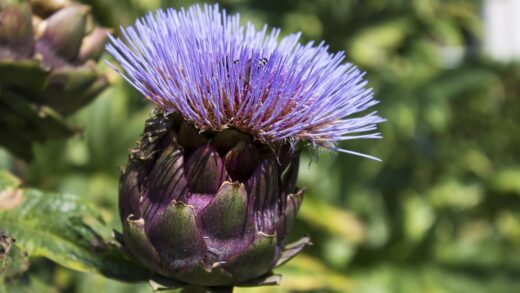The common blue violet, known scientifically as Viola sororia, is an exceptionally hardy and adaptable perennial native to the woodlands and meadows of North America. However, its widespread prevalence and low-maintenance nature do not mean it won’t appreciate dedicated care, especially when it comes to nutrient provision. To ensure the plant displays its best form, producing lush foliage and abundant blooms, it is essential to understand its specific nutrient requirements and proper fertilization practices. In its natural habitat, on the leaf-litter-covered floor of deciduous forests, the violet thrives in a medium that is constantly decomposing and rich in nutrients; this environment should be replicated as closely as possible in the garden.
Although the common blue violet can survive in a wide range of soil types, it thrives best in soil that is well-draining yet moisture-retentive, and rich in humus and organic matter. The structure of the soil is key, as a loose, friable medium allows the roots to penetrate deeply and easily absorb the necessary water and nutrients. Organic materials, such as compost or decomposed leaves, not only serve as a nutrient source but also improve the soil’s water retention and promote the activity of beneficial soil microorganisms. These microorganisms break down organic matter and convert it into a form that is available to the plant, creating a self-sustaining, healthy ecosystem in the plant’s root zone.
The soil’s pH level has a direct impact on nutrient availability. The common blue violet prefers slightly acidic to neutral soils, ideally feeling its best within a pH range of 6.0 to 7.0. If the soil is too alkaline or too acidic, certain essential nutrients, such as iron or phosphorus, become “locked up” in the soil in a form unavailable to the plant. This means that even if the nutrient is present in the soil, the plant may still show signs of deficiency, making the adjustment and maintenance of the correct pH a fundamental step in successful cultivation.
For healthy development, the common blue violet, like all plants, requires macro- and micronutrients. The three most important macronutrients are nitrogen (N), phosphorus (P), and potassium (K), which play crucial roles in different stages of the plant’s life cycle. Nitrogen is responsible for foliage growth, phosphorus for root development and flowering, and potassium for overall plant health and disease resistance. Although the violet has relatively low nutrient demands, a balanced ratio of these elements is essential for optimal growth and achieving a rich display of flowers.
The Role of Macronutrients and Deficiency Symptoms
Nitrogen (N) is the engine of plant growth, essential for building chlorophyll molecules, which carry out photosynthesis, the process of converting sunlight into food. With an adequate nitrogen supply, the common blue violet develops dense, deep green foliage, which is vital for producing the energy needed for vigorous flowering. The most characteristic symptom of nitrogen deficiency is the yellowing or paling of leaves (chlorosis), especially on older, lower leaves, as well as generally weak, stunted growth. However, it is important to avoid excessive nitrogen application, as it can stimulate excessive leaf development at the expense of flowers and make the plant more susceptible to diseases.
Phosphorus (P) plays a key role in energy transfer processes, healthy root development, and the formation of flowers and seeds. Without sufficient phosphorus, the plant cannot effectively develop its root system, which limits water and nutrient uptake. Phosphorus deficiency often manifests as a purplish discoloration on the leaves, poor flowering or a complete lack of blooms, and an underdeveloped root system. Since phosphorus is not very mobile in the soil, it is particularly important that it is present in an available form in the root zone, especially at the beginning of the spring growth period.
Potassium (K) is the guardian of the violet’s overall health and stress tolerance. This macronutrient is involved in the activation of more than fifty plant enzymes, regulates the plant’s water balance by operating the stomata, and increases resistance to diseases, drought, and cold. Symptoms of potassium deficiency can be more subtle; they typically appear as yellowing or browning along the margins of older leaves, resembling scorching. An adequate supply of potassium ensures that the plant’s tissues are strong and resilient, contributing to its longevity and vitality.
In addition to the three main macronutrients, the secondary macronutrients—calcium (Ca), magnesium (Mg), and sulfur (S)—should not be forgotten. Calcium is responsible for cell wall stability, magnesium is the central atom of the chlorophyll molecule, and sulfur is a component of important amino acids and proteins. Although these elements are needed in smaller quantities than the NPK trio, their deficiency can also limit growth and cause various deficiency symptoms. A well-composted soil rich in organic matter usually contains these secondary nutrients in sufficient amounts.
The Practice and Timing of Fertilization
For the common blue violet, the golden rule of fertilization is the “less is more” principle, especially if the plant is already living in nutrient-rich garden soil. Before reaching for any fertilizer, it is wise to assess the condition of the soil; a simple soil test can reveal a great deal about existing nutrient levels and the soil’s pH. In many cases, if the soil is rich in organic matter, supplemental fertilization may be completely unnecessary, and could even be harmful. The goal is not to change the soil’s entire nutrient profile, but to fine-tune it and replenish the nutrients used by the plant.
The most ideal and gentle method of nutrient replenishment is the use of organic fertilizers. A thin layer of mature compost, leaf mold, or well-rotted manure spread around the plants in late autumn or early spring can work wonders. These materials release their nutrients slowly and gradually, avoiding the risk of over-fertilization and the accumulation of fertilizer salts. They also improve soil structure, increase its water-holding capacity, and feed the beneficial soil life, which results in a much healthier and more resilient garden in the long run.
If the soil is particularly poor and the plant is showing signs of deficiency, the use of synthetic fertilizers may be necessary. In such cases, choose a balanced, all-purpose, water-soluble or granular fertilizer, such as a 10-10-10 NPK formulation. Liquid feeds should always be applied at the concentration recommended in the instructions, or even more diluted, to avoid burning the roots. Granules should be gently worked into the top layer of the soil, taking care that they do not come into direct contact with the plant’s leaves or stem.
The timing of fertilization is critical. The most appropriate time is early spring, when the plants begin their active growth after the winter dormancy period. In this phase, they have the greatest need for nutrients to develop new shoots, leaves, and flowers. A single, light application of fertilizer in early spring is usually sufficient for the entire season. Avoid fertilizing in the heat of summer, which can cause stress to the plant, and also avoid late autumn nutrient application, as it can stimulate weak, late-season growth that is vulnerable to winter frost.
Special Considerations and the Dangers of Over-fertilization
A significant distinction must be made between the nutrient supply for common blue violets grown in the ground versus in pots. Containerized plants have a limited volume of growing medium from which nutrients are leached out more quickly with regular watering. For this reason, potted violets require more frequent, but much more diluted, liquid feeding during the active growing season, typically every 2-4 weeks. In contrast, their counterparts in garden beds can draw from a much larger soil ecosystem, so intervention is needed far less frequently, if at all.
Over-fertilization is one of the most common mistakes one can make, and it can cause serious damage. Excess fertilizer accumulates in the soil in the form of salts, which alters its osmotic conditions and inhibits the roots’ ability to absorb water. This phenomenon, often called “root burn,” can paradoxically lead to the plant drying out and wilting, even if the soil is moist. Excessive nitrogen intake, as mentioned earlier, results in weak, leggy growth with sparse flowering, which attracts pests like aphids.
Recognizing the signs of over-fertilization, or fertilizer burn, is key to taking swift action. The most common symptoms include brown, dry, crispy die-back on the edges or tips of leaves, sudden wilting of the plant despite moist soil, and a whitish salt crust that may appear on the soil surface. If these signs are observed, the first and most important step is to thoroughly flush the soil with a copious amount of clean water. This process helps to leach the excess salts from the root zone, giving the plant a chance to recover.
In summary, the most effective and sustainable way to nourish the common blue violet is based on a holistic approach. The main focus should be on creating and maintaining healthy soil, primarily through the addition of abundant organic matter. Fertilization should not be seen as a routine chore, but rather as a targeted, supplementary tool to be used only when the plant’s condition or the poverty of the soil truly warrants it. Continuous observation of your plant and assessment of its health is the best guide to when and how much nutrient supplementation it needs.














